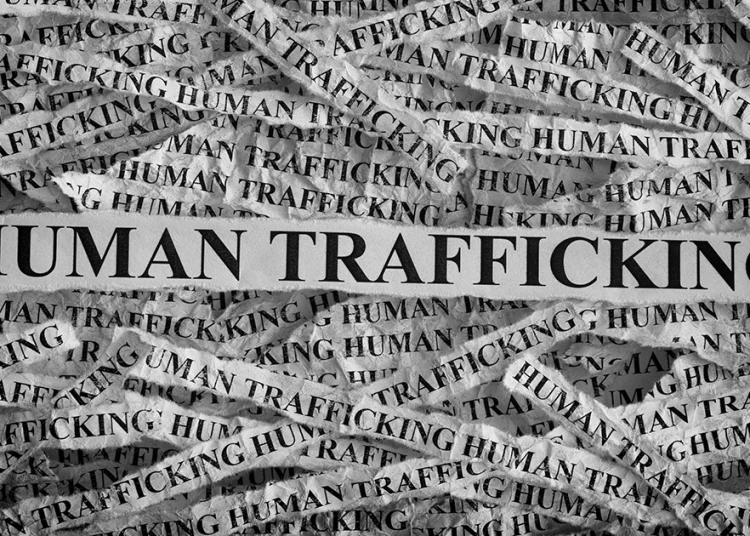The international community set aside the 30th day of July every year to remind humanity of the dangers inherent in trafficking in persons. This feeling of repulsion has its root in the evil days of slavery which many consider a crime that is as disagreeable as it is unacceptable. This year’s theme: “Use and abuse or technology”, emphasises the role of technology as a tool that can both enable and impede human trafficking. The United Nations (UN) has advised that preventing and raising awareness on safe use of the internet and social media may assist in reducing risk of people being exploited through online trafficking.
The theme is expected to bring to notice the adverse effects of the internet where traffickers often reach out to potential victims and can facilitate necessary modes to carry out the heinous crime. “Traffickers use social media to identify, groom and recruit victims, including children; e-mails and messaging services are used for the moral coercion of the victims; and online platforms allow traffickers to widely advertise services provided by victims, including child photographic material,” the UN explained. Furthermore, technology also helps perpetrators communicate among themselves and go off the wire to evade punishments.
The UN secretary-general, Antonio Guetteres, in his comment to mark the day, said majority of those affected are women and children. “Human traffickers are taking advantage of these vulnerabilities, using sophisticated technology to identify, track, control and exploit victims. Online platforms allow them to deceive and recruit people with false promises.”
According to United Nations Office on Drugs and Crime (UNODC), in the year 2018, an estimated 50,000 human trafficking victims were detected and reported by 148 countries. Also, 50 percent of spotted victims were trafficked for sexual exploitation while 38 percent were exploited for forced labour. The female victims continue to be the main targets with women making up 46 percent and girls 19 percent of all victims of trafficking. One in every three victims detected is a child with the number of children among detected trafficking victims tripling, while the share of boys has increased five times over the past 15 years worldwide.
The organisation further stated that worldwide report on trafficking indicate that the main form of human trafficking is sexual exploitation, which is at 79 per cent. Often these victims of sexual exploitation are regularly girls. And in the 2021 report by the National Agency for the Prohibition of Trafficking in Persons (NAPTIP), 1,112 cases of trafficking in persons were reported in the year said to be under review, with 35.8 per cent being cases of sexual exploitation and illegal migration that are mainly for prostitution.
The Global Report on Trafficking in Persons 2020 by UNODC, also stated that in sub-Saharan African region, 60 percent of trafficked victims comprise of children with majority from West Africa. As a result of the rising cases of trafficking, steps ought to be taken towards lessening the challenge. Most times those trafficked are taken advantage of as a result of their vulnerabilities due to desperation to escape poverty, homelessness, domestic violence, mental or physical disabilities and migration for greener pastures according to the International Federation of Women Lawyers (FIDA).
UNODC further shared some tips on how to avoid the trap of human trafficking through use of technology by adhering to the following guidelines: putting in place strict privacy settings. This method helps social media buffs to enjoy their passion and still maintain their privacy.
Other tips include the warning to beware of strange friend requests, as traffickers ‘have reached out to strangers to ‘chat’ via social media and then slowly work to build trust with the potential victim.’ It states not to over share as everything put online is in the public domain and you lose control over how your materials are being seen or shared. It advises never to share live locations.
In our considered opinion, it is important for everyone to beware of advertisements that seem too good to be true, for example, traffickers can use attractive languages for fake ‘job advertisements online, promising high wages for simple work or a chance to become a model. Traffickers will often be vague about the company’s credentials, details, or the terms of employment. If it seems too good to be true, it probably is.’ It advises to flag the information and not share it, encourages vigilance on the internet and urges people to report pages and activities that appear suspicious to authorities.
Therefore, this newspaper strongly believes that the federal government should, through NAPTIP, intervene in the scourge of trafficking in humans to prevent this issue from getting out of hand. The federal government should totally aim to destroy the vicious web of human trafficking, by supplying the tools and equipment, the manpower and skills needed to tackle this hydra headed monster called trafficking in persons.





